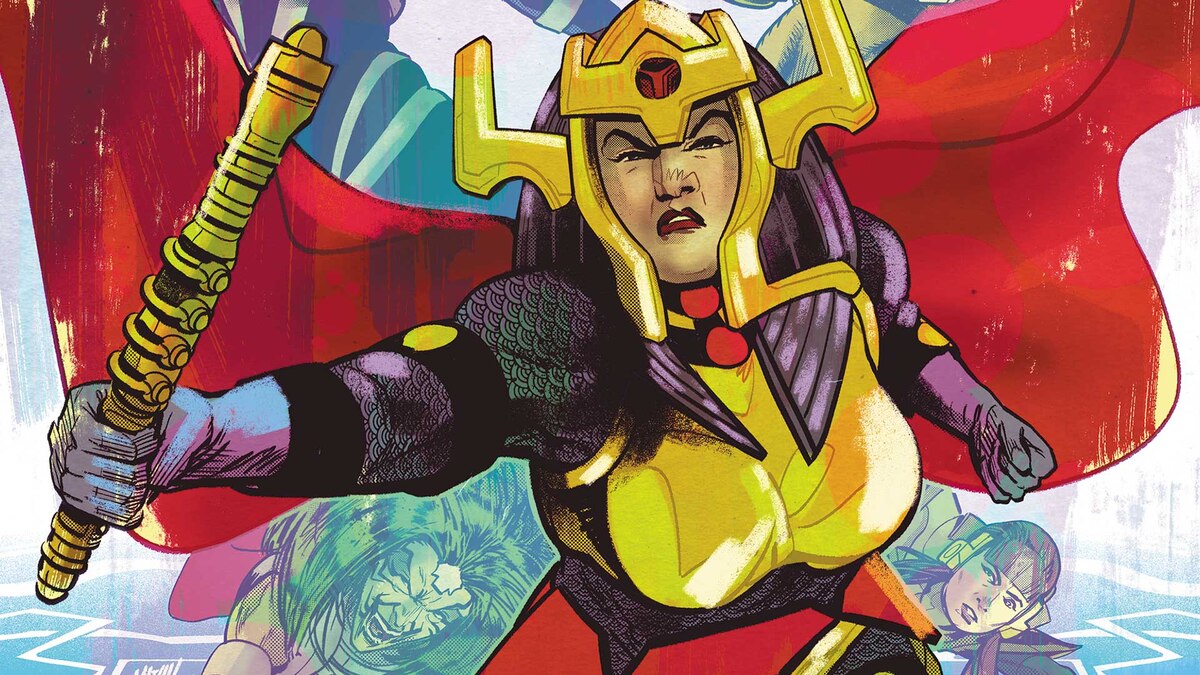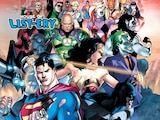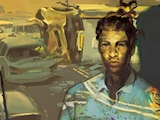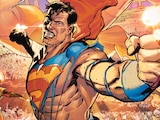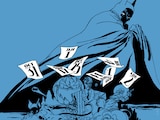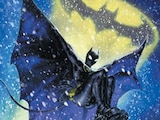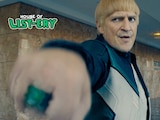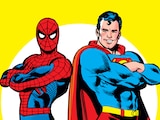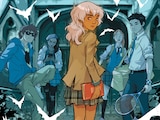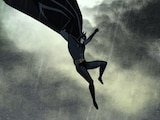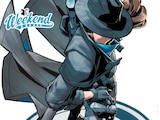It’s not easy for anyone on Apokolips, but it’s especially hard if you’re a woman. A brutal, despotic society, the only “power” to be gained must be given by Darkseid, and usually comes at a steep cost. Deception and backstabbing are common within Darkseid’s supporters, and those who do find themselves at the top have a hard time staying there. Anyone who disappoints doesn’t just fall out of failure. They often find themselves thrown into prison camps…or the fire pits.
All of which makes the Female Furies so fascinating. How did this band of women, led by the terrifying Granny Goodness, become the most ferocious and feared warriors on all of Apokolips? After all, women face more challenges than men in our workplaces and our world, and our world isn’t a fire-strewn hellscape controlled by an intergalactic tyrant. What sort of nightmares were they forced to endure on their rise to the top? And do they continue to this day?
These are some of the questions tackled by FEMALE FURIES, the timely, unsparing new miniseries written by SHADE, THE CHANGING GIRL writer Cecil Castellucci and drawn by PLASTIC MAN’s Adriana Melo. Female Furies hurls Jack Kirby’s Fourth World into the “Me Too” era, showing that even the strongest, most formidable women in the multiverse aren’t immune to harassment and humiliation at the hands of powerful, and power-hungry, men. We recently spoke with Castellucci about how the notion of tackling such a powerful, of-the-moment subject through the lens of the New Gods came together. In the process, she shared her thoughts on why Granny Goodness is a tragic character, how the Furies are the perfect characters for this kind of story and why even homicidal sisters are better than no sisters at all.
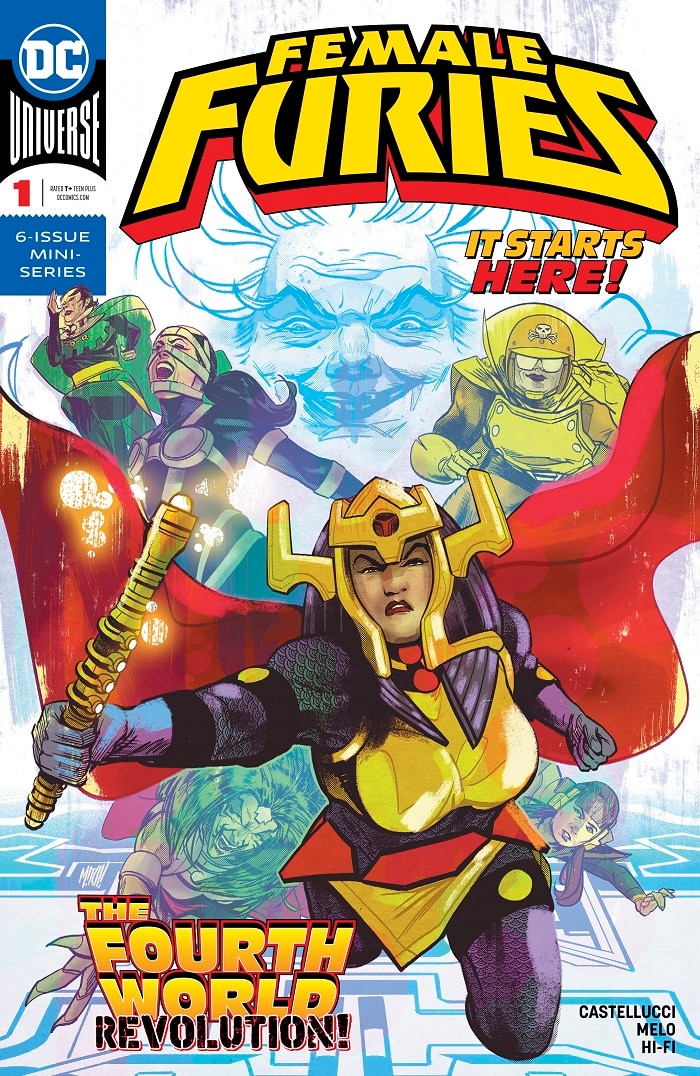
The idea for Female Furies is very timely. How did this miniseries come together?
As Shade, the Changing Girl was coming to a close, I was looking around for another project to do at DC. I’d combed through and photocopied a few pages from the DC Encyclopedia looking for interesting characters to grapple with next. When I was visiting the DC offices, I popped in to say hi to Dan DiDio and talk about the characters I was drawn to. I showed him my photocopied page of the Inferior Five, but someone already had beaten me to it. Before I got to any of my other photocopies, we started talking about things and themes and I said, off the cuff, “Where’s The Handmaid’s Tale here at DC?”
That sparked a conversation and I left his office with the Jack Kirby Fourth World Omnibus and the challenge to crack the Female Furies. I have to hand it to Dan for instigating it and then editor Jamie S. Rich, who really helped me craft the pitch to make it something more than that. Something that is sort of ripped from the headlines these days. I’m so glad to have been able to carve out a really interesting little corner in the Fourth World. I feel so lucky that a great conversation led to something that—as a woman—I felt compelled to write about.
This is a pretty different Granny Goodness than we’ve seen in other New Gods comics. How would you describe her?
I think it’s just a different shade of Granny. Granny is a formidable character, who is both power-hungry and capable. But she’s under the thumb of Darkseid, who keeps her in her place so that she must serve him instead of serving her own ambitions. I think she’s a tragic character. She works so hard and has been given the short shrift throughout her life, and a lot of that has to do with her gender. To me, in this book, she and all the Furies are heroes, even if they are villains in the larger story of the Fourth World.

The message and parallels to our society in this book are pretty clear, but I particularly enjoyed some of the more subtle things in the first issue—like how for Goodness to prove her worth to Darkseid in battle, the person she needs to kill happens to be another woman. How natural was it to draw these sorts of parallels in this story?
Yes. Exactly. And she betrays Tigra. I thought it was important to see Granny as a lone wolf who does whatever she needs to keep her status with Darkseid and to be the only one with no competition, but then juxtaposing that with the fact that she then turns around and creates this team of women who are sisterly to each other. (Well, as much as you can be when you’d kill your sister if it was to your advantage.) I kind of wanted to evoke that idea of being the only woman in the room, to then being one of a few.
Hi-Fi does something pretty cool with the colors in this issue. Any time there’s a flashback, the book’s colored flatly, similar to how comics were colored in Kirby’s time. Whose idea was that?
I know! I love that it’s not the usual sepia! I think that was all Jamie S. Rich and Brittany Holzherr’s idea. And I think it is the right call. It makes it so firmly Kirby-esque.
So far, the story seems to be largely focused on Granny Goodness and Aurelie. Will the other Furies get their moments in the spotlight in future issues?
Oh yes. There is so much story and the characters are so great, but if you know your Fourth World, you know you can’t tell Barda’s story without Granny and Aurelie, so they have to be front and center for issue one. And yes, the other ladies will get a little time in the spotlight (or hellfire.)

This issue largely establishes the Furies’ place in this version of Apokolips, but the ending sets up what looks to be the overarching story. Where do things go from here?
Ha ha! I think things are not exactly what they seem. And I think the thread to follow is the awakening of the Furies.
More than anything, what do you hope readers get from this book?
I’m really hoping that people dig the idea that you can tell a story from many angles and that these larger than life characters are so flexible, that you can put them through their paces and they can take it. Most of all, I hope that people enjoy a story that both centers on women and is still meant for everyone.
FEMALE FURIES #1 by Cecil Castellucci, Adriana Melo and Hi-Fi is now available in print and as a digital download.
